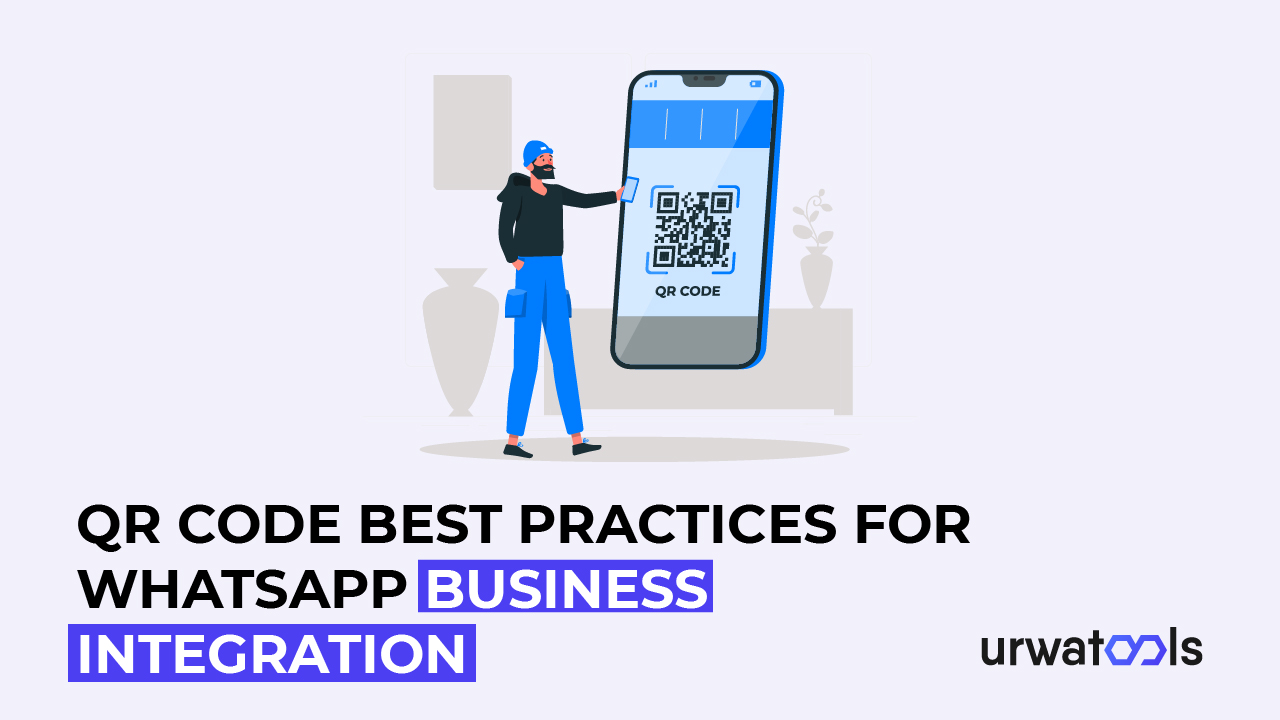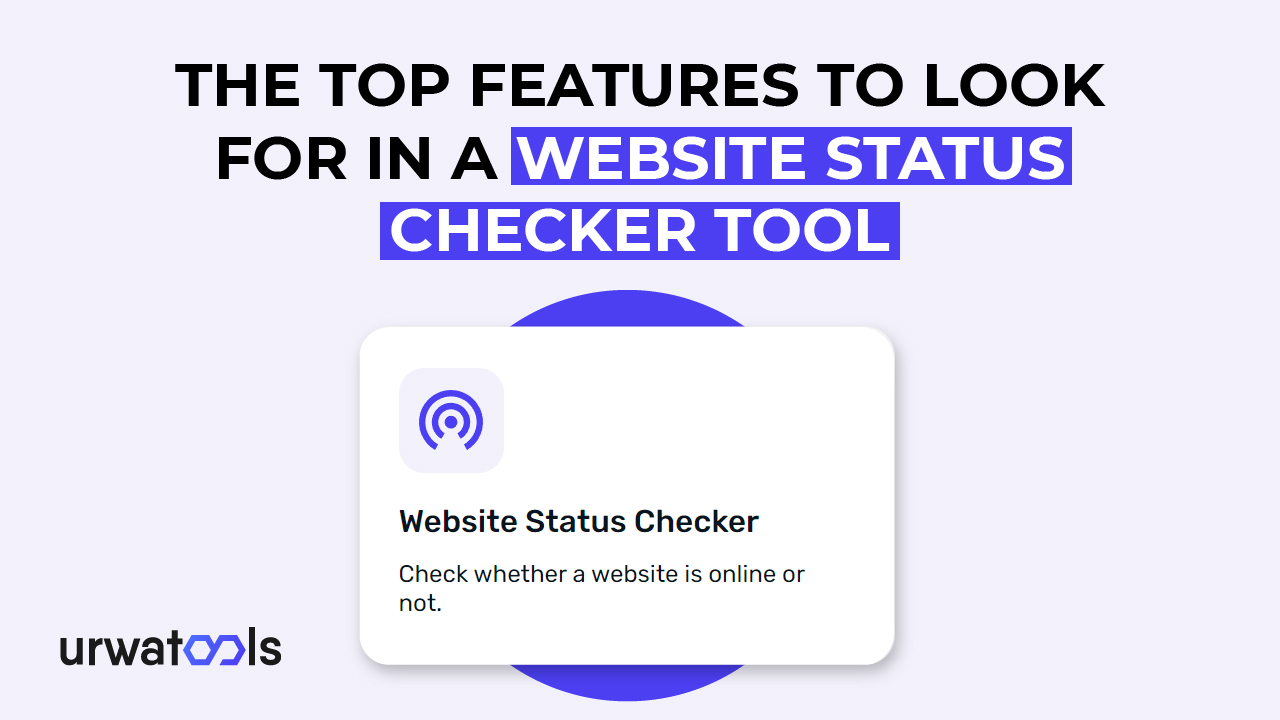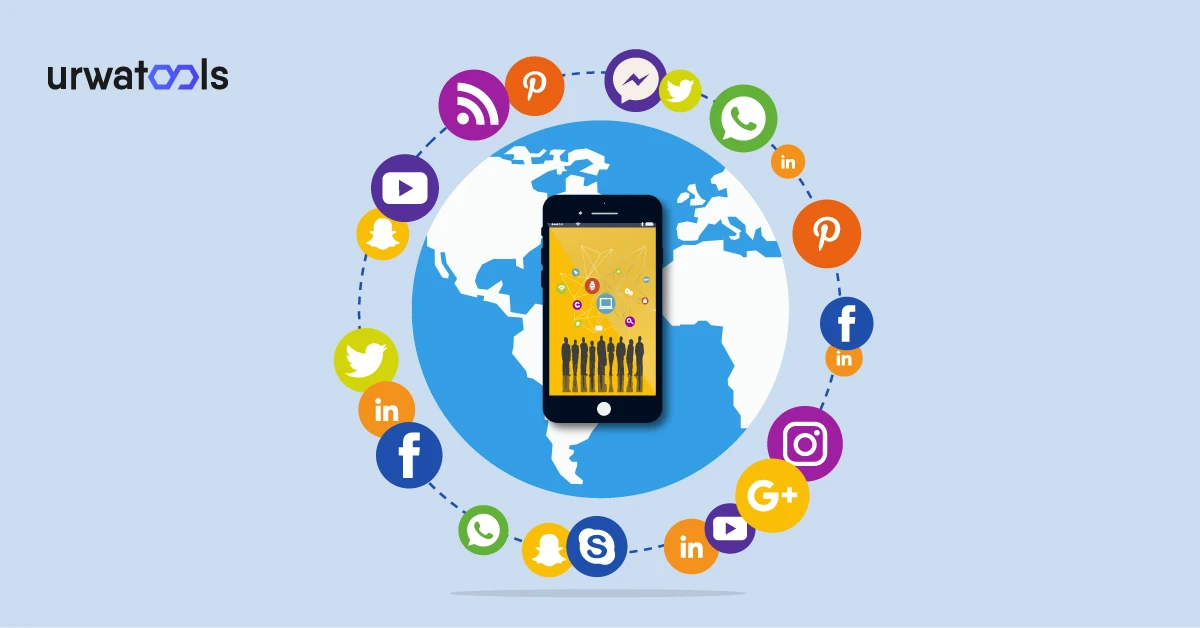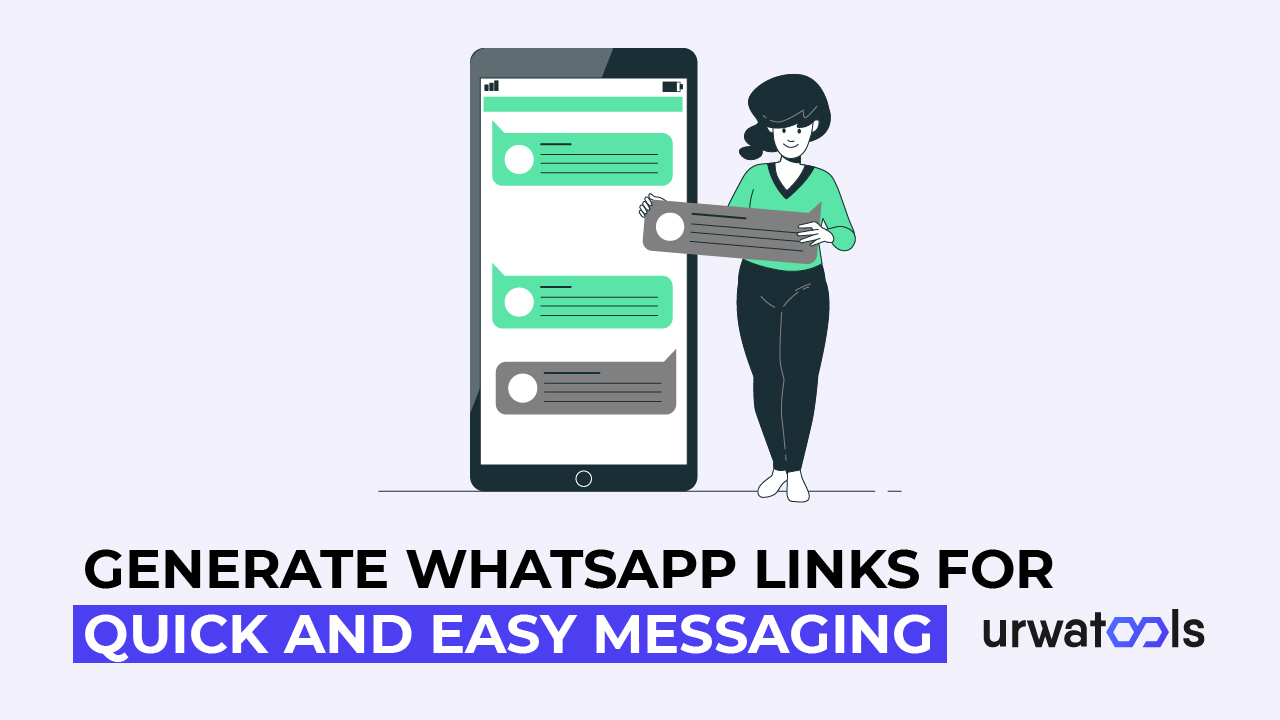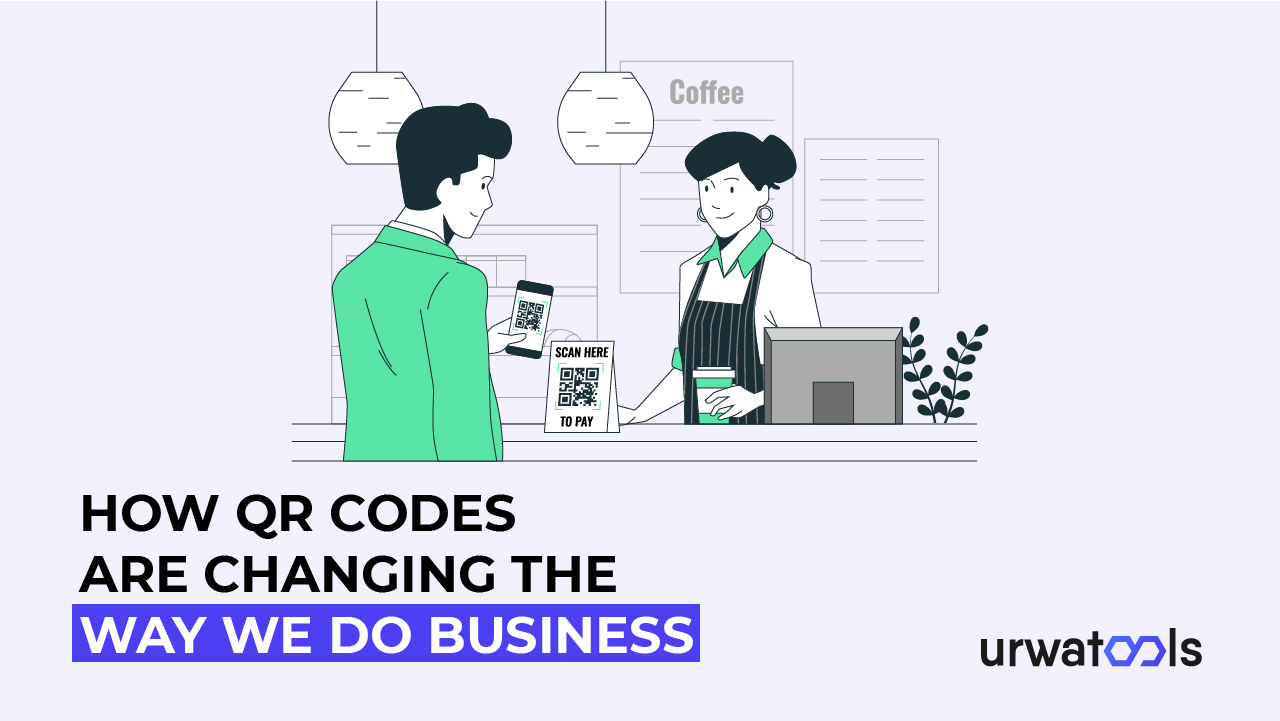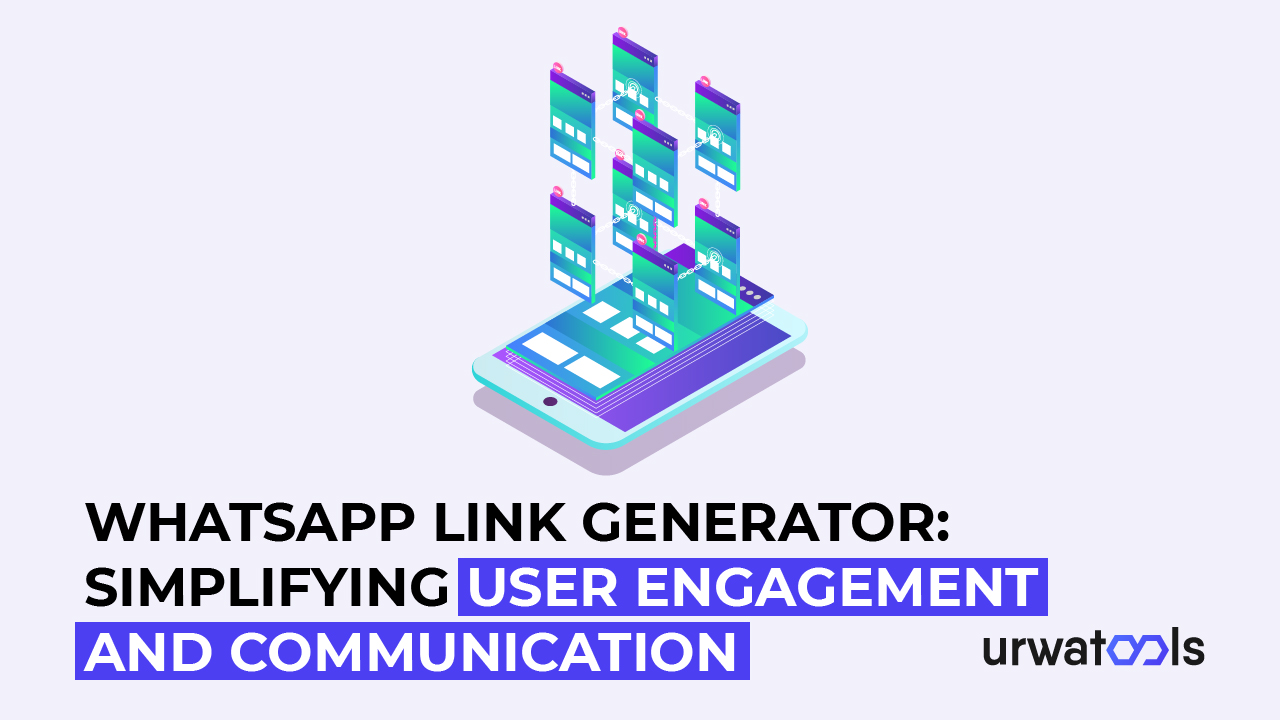QR 코드는 디지털 세계에서 보편화되어 물리적 상호 작용과 온라인 상호 작용을 빠르게 연결할 수 있는 방법을 제공합니다. WhatsApp Business와 같은 메시징 애플리케이션의 개발로 마케팅 캠페인에 QR 코드를 사용하면 소비자 참여와 커뮤니케이션을 향상시킬 수 있습니다. 이 게시물에서는 성공적인 배포와 우수한 결과를 보장하기 위해 WhatsApp Business에서 QR 코드를 사용하는 가장 효과적인 방법을 살펴봅니다.
1. 소개
QR 코드는 스마트폰이 정보에 액세스하거나 작업을 빠르게 수행하기 위해 스캔할 수 있는 2차원 코드입니다. 그들은 사용의 단순성과 적응성으로 인해 많은 인기를 얻었습니다. 반면에 WhatsApp Business는 기업이 고객과 효과적으로 상호 작용할 수 있도록 하는 강력한 메시징 플랫폼입니다. 기업은 WhatsApp Business에서 QR 코드를 사용하여 고객 경험을 개선하고, 전환을 생성하고, 더 강력한 참여를 유도할 수 있습니다.
2. QR 코드 모범 사례
1. QR 코드 디자인:
WhatsApp Business 통합을 위한 QR 코드를 생성할 때 디자인에 주의를 기울이는 것이 중요합니다. 다음은 고려해야 할 몇 가지 모범 사례입니다.
a. 적절한 QR 코드 유형 선택: 캠페인 목표에 따라 URL, 텍스트, 이메일 또는 vCard와 같은 다양한 QR 코드 유형 중에서 선택할 수 있습니다. 의도한 활동과 목표에 해당하는 것을 선택하십시오.
b. 올바른 크기 선택: QR 코드는 가독성을 잃지 않고 쉽게 스캔할 수 있을 만큼 충분히 커야 합니다. 일반적인 이상적인 크기는 2-3인치 정사각형입니다.
c. 높은 대비 및 가독성 달성: QR 코드와 배경 사이에 고대비 색상을 선택하여 높은 가시성을 달성합니다. 또한 코드의 오류 수정 수준이 손상되거나 변형된 경우에도 가독성을 유지할 수 있도록 적절하게 구성되어 있는지 확인합니다.
2. 배치 및 가시성:
QR 코드의 유용성은 신중한 배치에 달려 있습니다. 다음 제언을 고려해 보십시오.
a. 전략적 마케팅 자료 배치: 제품 포장, 브로셔, 포스터 또는 배너와 같은 인쇄물의 눈에 잘 띄는 위치에 QR 코드를 포함합니다. 눈에 잘 띄고 청중의 관심을 끌 수 있도록 하십시오.
b. 다양한 상황에서 가시성 향상: QR 코드는 판독되는 다양한 환경에 맞게 최적화되어야 합니다. 예를 들어 노출로 인한 손상이나 퇴색을 방지하기 위해 실외 장소에 QR 코드를 표시하려는 경우 내후성 재료 또는 보호 코팅을 고려하십시오.
3. 행동 유도
사람들이 QR 코드를 스캔하도록 설득하기 위해 명확한 지침과 매력적인 인센티브를 제공하는 것이 중요합니다. 다음과 같은 방법을 고려해 볼 수 있습니다.
a. 구체적인 지침 제공: QR 코드 스캔에 대한 명확하고 간단한 지침을 제공합니다. 직설적인 언어를 사용하여 사람들이 과정을 통해 도움을 주고 그들이 얻을 수 있는 이점을 강조합니다.
b. 유혹적인 인센티브 사용: QR 코드 스캔에 대한 인센티브로 독점 할인, 특별 프로모션 또는 독점 콘텐츠에 대한 액세스를 제공합니다. 매력적인 인센티브를 사용하면 긴박감을 조성하고 사람들이 행동하도록 동기를 부여합니다.
4. 랜딩 페이지 최적화
소비자가 QR 코드를 스캔할 때 랜딩 페이지에서 원활하고 매력적인 경험을 제공하는 것이 중요합니다. 아래 나열된 훌륭한 방법을 고려하십시오.
a. 모바일에 최적화된 경험 개발: 스마트폰을 사용하여 QR 코드를 스캔하는 사람들에게 적합하도록 모바일 디바이스용 랜딩 페이지를 최적화합니다. 페이지가 빠르게 열리고, 쉽게 탐색하고, 다양한 화면 크기에서 멋지게 보이는지 확인합니다.
b. QR 코드 캠페인에 대한 랜딩 페이지 콘텐츠 사용자 지정: 캠페인에 맞게 콘텐츠를 개인화합니다. QR 코드가 제품 프로모션으로 연결되는 경우 랜딩 페이지에 거래에 대한 광범위한 정보가 있는지 확인하십시오. 명확한 실행 프로세스가 있어야 합니다.
5. WhatsApp Business 통합에서 QR 코드의 장점
QR 코드는 최근 몇 년 동안 상당한 인기를 얻었으며 WhatsApp Business와의 통합은 비즈니스에 몇 가지 이점을 제공합니다. 이 섹션에서는 WhatsApp Business 통합 내에서 QR 코드의 주요 이점을 살펴봅니다.
I. 원활한 고객 상호 작용:
QR 코드를 사용하면 WhatsApp Business에서 소비자와 더 쉽게 연결할 수 있습니다. 사용자는 QR 코드를 스캔하여 비즈니스의 WhatsApp 채팅 인터페이스에 빠르게 액세스할 수 있으므로 번거로운 검색을 피하고 연락처 정보를 보존할 수 있습니다. 이러한 단축된 상호 작용은 사용자 경험을 개선하고 회사에 대한 조기 참여를 촉진합니다.
II. 비즈니스 데이터에 대한 간단한 액세스:
QR 코드는 중요한 비즈니스 정보에 빠르게 액세스할 수 있도록 적절하게 배치될 수 있습니다. 고객은 QR 코드를 스캔하여 제품 사양, 가격, 프로모션, 회사 시간 및 기타 관련 정보를 확인할 수 있습니다. 이러한 액세스 용이성은 클라이언트 편의성을 향상시키고 더 많은 정보에 입각한 의사 결정을 가능하게 합니다.
III. 효율적인 고객 지원:
WhatsApp Business에서 QR 코드를 사용하여 고객 관리 팀과 직접 채팅을 설정할 수 있습니다. 고객은 QR 코드를 스캔하여 지원 에이전트와 빠르게 연결할 수 있으므로 시간이 많이 걸리는 웹 사이트나 전화 탐색 할 필요가 없습니다. 이 효과적인 고객 서비스는 고객 만족도를 높이고 긍정적인 브랜드 이미지를 만듭니다.
IV. 개선된 마케팅 캠페인:
비즈니스용 WhatsApp과 QR 코드를 통합하면 새로운 마케팅 기회가 제공됩니다. 기업은 QR 코드를 만들어 고객을 판촉 거래, 특별 정보 또는 대화형 경험으로 안내할 수 있습니다. 이러한 연결을 통해 마케터는 개인화된 메시지를 만들고 기업은 대상 고객과 소통할 수 있습니다.
V. 오프라인에서 온라인으로 연결:
QR 코드는 오프라인과 온라인 채널 간의 효과적인 연결 고리 역할을 합니다. QR 코드는 제품 포장, 팜플렛, 광고판, 상점과 같은 유형의 마케팅 자료에 사용할 수 있습니다. 고객은 이러한 코드를 스캔하여 디지털 영역으로 쉽게 이동할 수 있으므로 기업은 오프라인 마케팅 활동의 영향을 추적하고 온라인 전환을 촉진할 수 있습니다.
VI. 데이터 모니터링 및 분석:
WhatsApp Business에 통합된 QR 코드는 고객 행동 및 캠페인 효과에 대한 유용한 정보를 제공합니다. 기업은 QR 코드 스캔, 상호 작용 및 전환과 같은 분석을 측정할 수 있습니다. 이 정보를 통해 기업은 마케팅 전술을 미세 조정하고 고객 상호 작용을 개선하며 QR 코드 이니셔티브의 ROI를 계산할 수 있습니다.
VII. 비용 효율성:
QR 코드는 기업이 고객 커뮤니케이션을 개선할 수 있는 저렴한 방법입니다. QR 코드를 만들고 활용하는 것은 기존 마케팅 전술에 비해 상당히 저렴합니다. QR 코드는 비용이 저렴하기 때문에 다양한 규모의 기업에 어필하여 리소스를 더 잘 사용할 수 있습니다.
VIII. 유연성 및 확장성:
QR 코드는 다양한 시나리오에서 활용될 수 있기 때문에 적응력이 매우 뛰어납니다. 제품 포장, 명함, 이벤트 티켓, 디지털 마케팅 및 기타 자료에 사용할 수 있습니다. QR 코드는 많은 마케팅 플랫폼과 접점에서 간단하게 복사하고 확장할 수 있어 일관된 브랜드 메시지와 소비자 경험을 제공합니다.
IX. 비접촉식 상호 작용:
QR 코드는 사회적 소외와 위생 인식이 높아진 시대에 기업과 고객 간의 마찰 없는 상호 작용을 가능하게 합니다. QR 코드는 물리적 접촉이나 물품 교환의 필요성을 제거하여 고객이 비즈니스와 상호 작용할 수 있는 안전하고 간단한 방법을 제공합니다.
X. 국제적 접근성:
WhatsApp Business는 전 세계적으로 널리 사용되므로 기업이 전 세계 고객과 소통할 수 있는 탁월한 성능을 발휘하는 플랫폼입니다. QR 코드를 추가함으로써 기업은 WhatsApp Business의 방대한 사용자 기반을 활용하고 지리적 제한에 관계없이 다양한 청중에게 다가갈 수 있습니다.
6. 판매 및 리드 생성을 위한 QR 코드
WhatsApp Business 통합은 판매를 촉진하고 리드를 생성하는 효과적인 도구가 될 수 있습니다. 이 섹션에서는 기업이 QR 코드를 사용하여 판매를 늘리고 중요한 리드를 수집하는 방법을 살펴봅니다. 기업은 다음 기술을 사용하여 마케팅 노력을 극대화하고 전환을 향상시킬 수 있습니다.
I. QR 코드를 사용하여 매출 증대:
QR 코드는 제품 사이트나 특별 거래에 직접 연결할 수 있어 고객이 효율적으로 구매할 수 있습니다. 고객은 QR 코드를 스캔하여 WhatsApp Business 내의 특정 제품 또는 서비스 페이지를 방문하여 자세한 정보, 가격 및 리뷰를 볼 수 있습니다. 이 단순화된 절차는 마찰을 줄이고 빠른 거래를 장려합니다.
II. QR 코드 옵트인으로 리드 캡처:
기업은 QR 코드를 사용하여 옵트인 옵션을 제공하여 리드를 수집할 수 있습니다. 고객은 QR 코드를 스캔하여 뉴스레터, 프로모션 업데이트 또는 로열티 프로그램에 가입할 수 있습니다. 이 방법을 통해 조직은 중요한 고객 정보를 획득하고 향후 마케팅 활동을 위한 리드 데이터베이스를 만들 수 있습니다.
III. QR 코드를 CRM 시스템에 연결:
기업은 QR 코드를 고객 관계 관리(CRM) 시스템과 통합하여 리드 관리를 가속화하고 후속 활동을 자동화할 수 있습니다. 고객이 QR 코드를 스캔하면 정보가 즉시 기록되고 CRM 시스템으로 전송되어 기업이 잠재 고객을 쉽게 관리하고 육성할 수 있습니다.
IV. 제안 및 후속 조치 개인화:
QR 코드는 동적으로 생성된 랜딩 페이지로 이어지며 개인화된 마케팅 이니셔티브에 도움이 될 수 있습니다. 기업은 QR 코드로 캡처된 고객 데이터를 사용하여 개인의 관심사와 습관에 따라 맞춤형 제안 및 후속 조치를 보낼 수 있습니다. 개인화는 개인화된 마케팅 자료의 관련성을 개선하여 전환율을 높입니다.
V. 모니터링 및 분석:
QR 코드 성능 기업은 QR 코드용 추적 도구를 구현하여 성능을 평가하고 데이터 기반 조정을 수행할 수 있습니다. 분석 소프트웨어는 스캔 수치, 전환율 및 소비자 참여 수준과 같은 KPI를 측정합니다. 이 데이터는 기업에 QR 코드 프로모션의 성과에 대한 통찰력을 제공하여 전략을 최적화할 수 있도록 합니다.
VI. 소셜 공유 및 추천 장려:
QR 코드는 소셜 공유 및 추천을 촉진하는 데 사용될 수 있습니다. 기업은 QR 코드 랜딩 페이지에 소셜 미디어 공유 버튼을 포함하여 고객이 자신의 경험이나 특별 제안을 네트워크와 공유하도록 동기를 부여할 수 있습니다. 소셜 공유 및 추천을 장려하면 QR 코드 캠페인의 도달 범위가 넓어지고 판매 및 리드 생성 가능성이 높아집니다.
VII. QR 코드 사용 장려:
기업은 고객이 QR 코드를 스캔하도록 유도하기 위해 고유한 할인, 보상 또는 프리미엄 콘텐츠에 대한 액세스와 같은 인센티브를 제공할 수 있습니다. 기업은 명확한 가치 제안을 제시하여 고객이 QR 코드와 상호 작용하도록 유도하여 판매 및 리드 생성을 개선할 수 있습니다.
VIII. 인플루언서 및 파트너와의 협업:
QR 코드는 인플루언서 또는 주요 파트너와 협력하여 도달 범위를 늘리고 수익을 창출할 수 있습니다. 기업은 현재 청중 기반과 연결하고 인플루언서 또는 파트너가 채널을 통해 QR 코드를 홍보하도록 하여 명성과 영향력에서 이익을 얻을 수 있습니다. 이러한 협업 전략은 인지도를 구축하고, 새로운 소비자를 유치하고, 수익을 높일 수 있는 잠재력을 가지고 있습니다.
IX. 후속 조치 및 잠재 고객 육성:
QR 코드를 사용하여 리드를 포착하는 기업은 이러한 잠재 고객을 육성하기 위한 효과적인 후속 조치를 수립해야 합니다. 비즈니스는 WhatsApp Business의 메시지 기능을 사용하여 개인화된 메시지, 제품 제안 또는 특별 제안을 보내 잠재 고객의 참여를 유도하고 구매를 유도할 수 있습니다.
X. 원활한 결제 옵션 제공:
기업은 판매 전환을 극대화하기 위해 결제 프로세스를 단순화하고 사용자 친화적으로 만들어야 합니다. Whatstos QR 코드는 안전한 결제 옵션과 연결되어 고객이 편리하고 신뢰할 수 있게 거래할 수 있도록 합니다. 원활한 결제 프로세스는 소비자 만족도를 높이고 장바구니 포기율을 낮춥니다.
7. QR 코드 추적 및 분석
QR 코드의 성능을 추적하고 분석하는 것은 효과를 극대화하는 데 매우 중요합니다. 다음 사항을 고려하십시오.
a. 스캔 활동 추적: QR 코드 추적 도구를 사용하여 스캔, 스캔 시간 및 사용자 인구 통계를 추적합니다. 이 정보는 노력을 평가하고 데이터 기반 의사 결정을 내리는 데 도움이 될 수 있습니다.
b. 사용자 참여 분석: QR 코드를 스캔한 후 사용자의 활동을 조사합니다. 클릭률, 전환율, 랜딩 페이지 참여와 같은 분석을 추적합니다. 이 데이터는 사용자 행동을 이해하고 마케팅 전략을 구체화하는 데 도움이 될 수 있습니다.
c. 데이터 기반 최적화: QR 코드 분석 통찰력을 사용하여 노력을 미세 조정하십시오. 획득한 데이터를 기반으로 다양한 디자인, 배치 전술 또는 인센티브를 실험하여 향후 결과를 개선하십시오.
8. 보안 및 개인 정보 보호 고려 사항
QR 코드를 WhatsApp Business와 통합할 때 보안을 우선시하고 사용자 데이터를 보호하는 것이 중요합니다. 다음과 같은 방법을 고려하세요.
a. 사용자 데이터 보호: QR 코드 캠페인이 데이터 보호 법률 및 개인 정보 보호에 대한 모범 사례를 준수하는지 확인합니다. 안전한 데이터 처리 프로토콜을 구현하고 수집하는 데이터와 그 사용 방법에 대해 사용자에게 알립니다.
b. 보안 QR 코드 솔루션 사용: 보안을 우선시하는 신뢰할 수 있는 QR 코드 생성 도구 및 플랫폼을 선택합니다. 무료 또는 신뢰할 수 없는 QR 코드 생성기는 보안 문제를 일으키거나 사용자 데이터를 위험에 빠뜨릴 수 있으므로 피해야 합니다.
9. WhatsApp Business 통합을 위한 QR 코드
QR 코드를 WhatsApp Business와 통합하면 비즈니스에 여러 가지 이점이 있습니다. 몇 가지 장점은 다음과 같습니다.
a. 편리한 커뮤니케이션: QR 코드를 사용하여 WhatsApp Business에서 소비자와 토론을 시작할 수 있습니다. 사용자는 앱을 사용하여 메시지를 보내거나, 제품 또는 서비스에 대해 문의하거나, 코드를 스캔하여 도움을 받을 수 있습니다.
b. 고객 참여 개선: QR 코드를 WhatsApp Business와 통합함으로써 기업은 개인화된 경험을 제공하고 소비자와 보다 상호 작용적이고 편리하게 소통할 수 있습니다. 고객 참여도가 향상되면 고객 만족도와 충성도가 향상될 수 있습니다.
c. 예시 및 사용 사례: 여러 사용 사례와 WhatsApp Business와의 성공적인 QR 코드 통합을 소개합니다. 다양한 소매, 접객 및 의료 비즈니스가 QR 코드를 사용하여 운영 및 소비자 경험을 향상한 방법을 보여줍니다.
10. QR 코드 통합의 미래 동향 및 혁신
QR 코드 통합은 기술이 발전함에 따라 상당한 발전을 거쳐 새로운 비즈니스 가능성이 열릴 것으로 예상됩니다. 이 섹션에서는 QR 코드 통합의 몇 가지 동향과 혁신을 살펴봅니다. 우리는 기업이 마케팅 및 고객 참여 전략을 강화하기 위해 활용할 수 있는 잠재적 개발에 대한 통찰력을 제공할 것입니다.
I. 실시간 업데이트를 위한 동적 QR 코드:
기존 QR 코드는 정적 정보를 전달합니다. 동적 QR 코드는 실시간으로 업데이트될 수 있습니다. 이 새로운 기술을 통해 기업은 QR 코드가 발급된 후에도 QR 코드의 목적지를 변경할 수 있습니다. 동적 QR 코드를 활용하여 기업은 특가 행사, 이벤트 세부 정보 또는 제품 가용성 변경과 같은 최신 정보를 제공할 수 있습니다. 이러한 적응성은 고객 경험을 개선하는 동시에 관련성과 가치를 유지합니다.
II. QR 코드를 통한 증강 현실(AR) 경험:
QR 코드와 증강 현실(AR) 기술은 엄청난 경제적 잠재력을 가지고 있습니다. 기업은 스캔할 때 향후 풍부한 AR 경험을 활성화하는 QR 코드를 구축할 수 있습니다. 가상 제품 체험, 인터랙티브 3D 모델, 게임화된 마케팅 캠페인이 이러한 경험의 예입니다. 기업은 QR 코드 통합에 AR을 도입하여 고객을 유치하고 경쟁업체와 차별화하며 고유한 브랜드 경험을 창출할 수 있습니다.
III. 음성 인식 QR 코드 상호 작용:
음성 인식 QR 코드 상호 작용은 음성 비서 및 스마트 스피커와 함께 큰 트렌드가 될 것으로 예상됩니다. 사용자는 음성 비서에게 QR 코드를 스캔하도록 요청할 수 있으므로 스마트폰 카메라로 수동으로 스캔할 필요가 없습니다. 음성 인식 QR 코드 상호 작용은 이동이 제한적이거나 핸즈프리 활동을 하는 사용자에게 특히 유용합니다. 기업은 음성 지원 장치에 대한 QR 코드를 최적화하고 음성 기반 마케팅 옵션을 조사하여 이러한 추세를 활용할 수 있습니다.
IV. 신흥 기술과의 통합:
QR 코드는 향후 블록체인, 사물 인터넷(IoT) 및 근거리 무선 통신(NFC)과 같은 향후 기술과 연결될 가능성이 높습니다. 이러한 인터페이스는 보안을 강화하고 원활한 연결을 제공하며 QR 코드 기능을 향상시킬 수 있습니다. 예를 들어, 기업은 블록체인 기술을 사용하여 QR 코드에 연결된 항목의 합법성과 추적성을 보장할 수 있습니다. QR 코드가 IoT 디바이스와 통합되면 개인화된 경험을 생성할 수 있습니다. 예를 들어, QR 코드를 스캔하여 스마트 홈 설정을 변경하거나 개인화된 제안을 받습니다. NFC 지원 QR 코드를 통해 비접촉식 결제 및 데이터 전송을 용이하게 할 수 있습니다. 기업은 기술 변화에 앞서 나가고 이러한 연결을 조사하여 고유한 고객 경험을 제공할 수 있습니다.
V. 향상된 데이터 분석 및 통찰력:
QR 코드 데이터 분석 도구 및 시스템은 QR 코드 채택이 증가함에 따라 점점 더 정교해질 것입니다. 기업은 정교한 분석을 사용하여 선호도와 참여 패턴을 이해할 수 있습니다. 기업은 이러한 통찰력을 사용하여 마케팅 전략과 고객 경험을 개선하고 데이터 기반 선택을 할 수 있습니다. 또한 예측 분석을 통해 기업은 고객의 요구를 예측하고 QR 코드 참여를 기반으로 개인화된 경험을 제공할 수 있습니다.
VI. 지속 가능성 및 환경 친화적:
QR 코드 환경에 대한 인식이 높아짐에 따라 지속 가능한 QR 코드가 기대됩니다. 전통적인 방법은 종이나 플라스틱과 같은 폐기물을 생성하는 재료에 의존했습니다. 지속 가능한 QR 코드는 환경 친화적인 재료 또는 디지털 등가물을 사용하여 생성하여 환경에 미치는 영향을 줄일 수 있습니다. 이러한 코드는 여전히 읽히고 WhatsApp Business에 연결될 수 있으므로 환경 친화적인 관행을 준수하면서 유용성을 유지할 수 있습니다.
VII. 생체 인증과 통합:
지문 또는 얼굴 인식과 같은 생체 인식은 보안을 위해 점점 더 대중화되고 있습니다. QR 코드는 보안을 강화하고 사용자 상호 작용을 용이하게 하기 위해 생체 인증과 연결될 수 있습니다. QR 코드를 스캔하려면 생체 인식 인증이 필요할 수 있으므로 권한이 있는 사람만 관련 자료에 액세스하거나 특정 작업을 실행할 수 있습니다. 이 연결은 중요한 트랜잭션이나 중요한 정보에 특히 중요합니다.
결론
마지막으로 WhatsApp 비즈니스 계획에 QR 코드를 구현하면 소비자 참여와 커뮤니케이션을 개선할 수 있습니다. 이 기사에서 제안하는 모범 사례에 따라 QR 코드 캠페인의 성공을 보장할 수 있습니다. 이러한 관행에는 눈길을 끄는 코드 개발, 전략적으로 배치, 명확한 지침 제공, 랜딩 페이지 최적화, 성능 측정 및 보안 우선 순위 지정이 포함됩니다. WhatsApp Business 통합과 함께 QR 코드를 사용하여 전환율을 높이고, 참여도를 높이고, 소비자에게 원활한 경험을 제공하세요.

